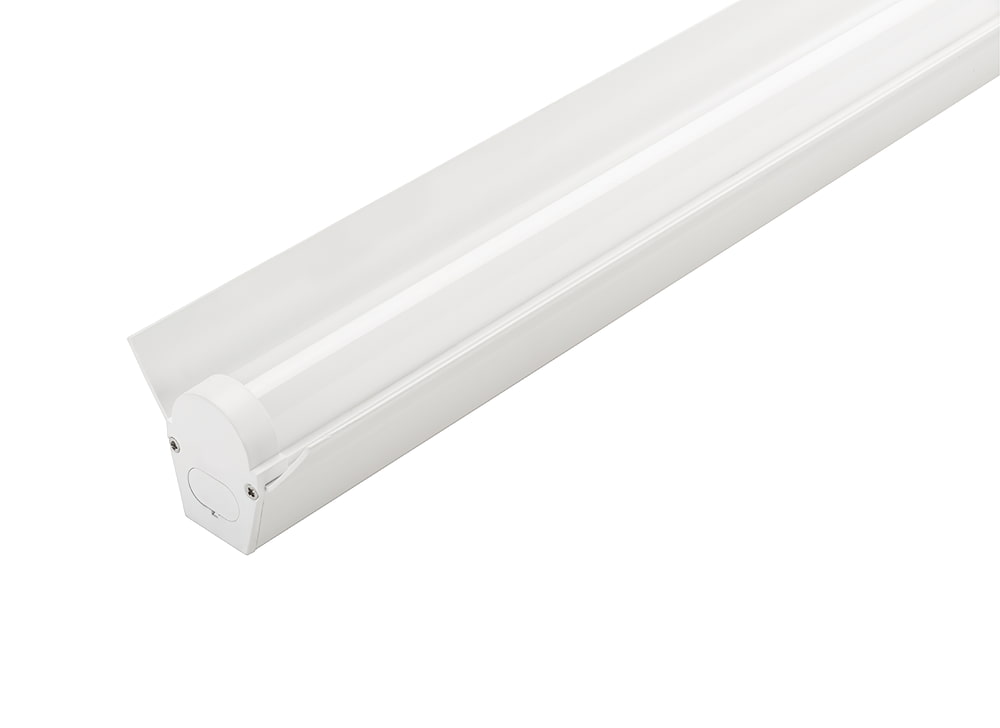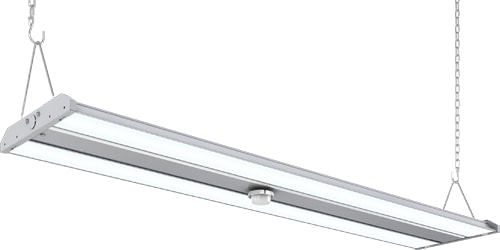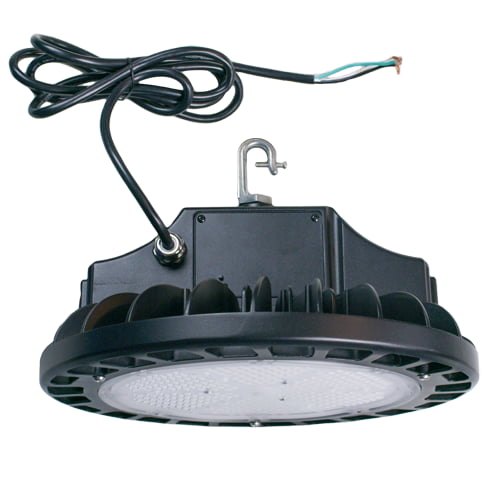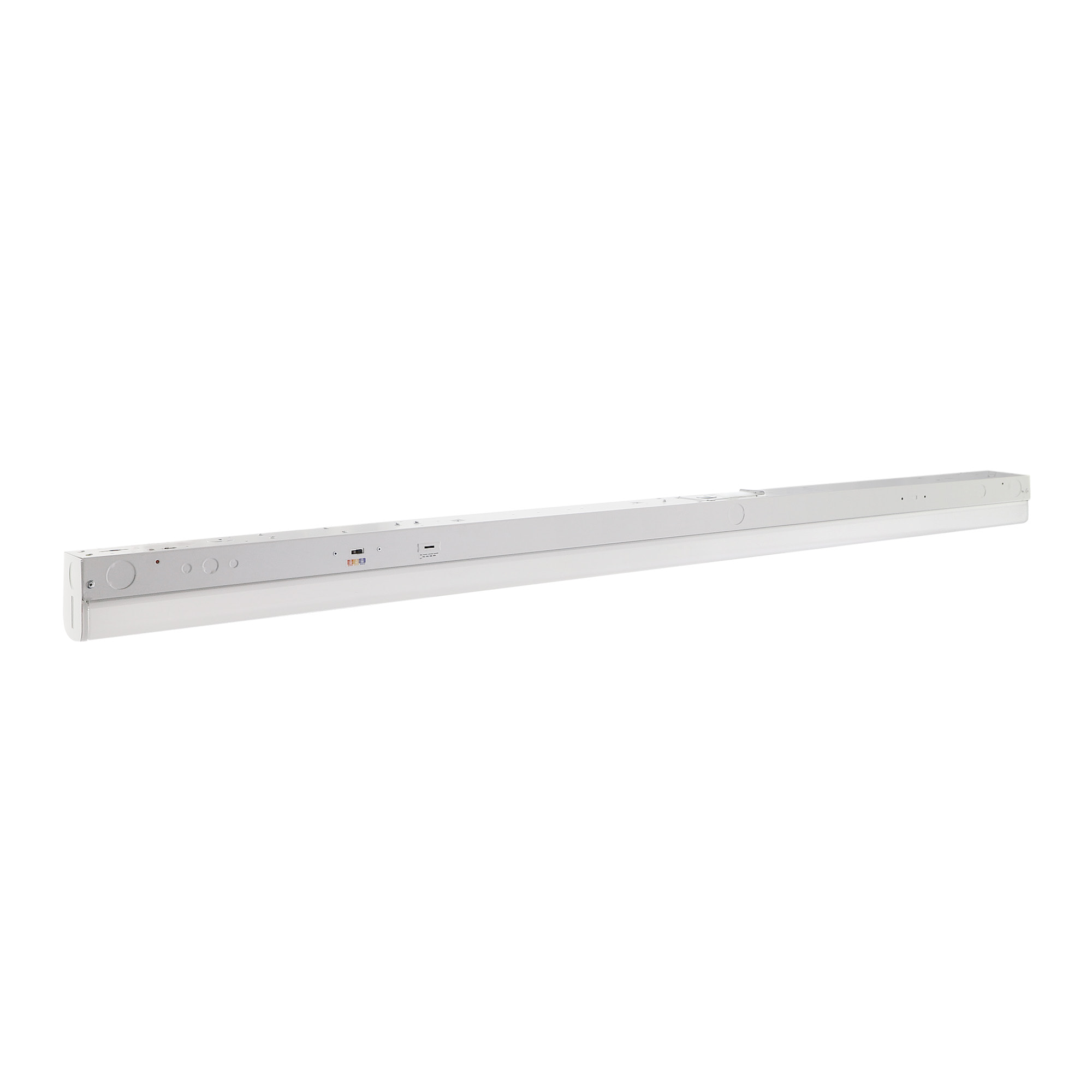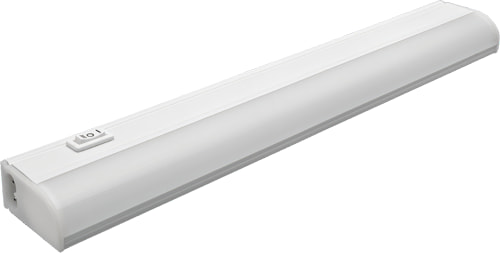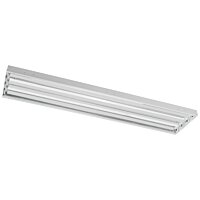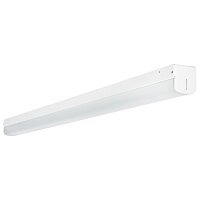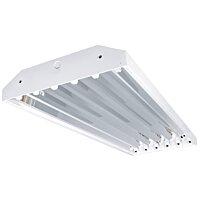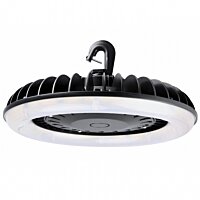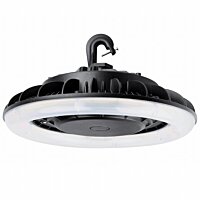LED Shop Light Overview

The LED shop lights we offer are durable, energy-efficient, and meet the lighting needs for any warehouse or industrial facility regardless of ceiling height. Choose from a selection of:
- Round LED Shop Lights
- Linkable Shop Lights
- 4 Foot LED Shop Lights
- 8 Foot LED Shop Lights
- LED Linear Strip Lights
- Linear Style High Bays
- UFO Style High Bays
Watts - Our LED shop lights range from 50W up to 400W.
Lumens - Our LED shop range from 6,900lm - 52,000lm.
Color Temperature (Kevin) - We offer 3000K, 4000K, and 5000K LED shop lights including specialized fixtures with adjustable color temperature (CCT).
Types of Shop Lights
When selecting lighting for workshops and general purpose areas, ease of use, reliability, energy efficiency and solid performance are all key points to consider. Once installed, fixtures used in these applications are usually forgotten about and given minimal attention and maintenance until something goes wrong. Our LED shop lights are the perfect solution for these applications, offering durable, reliable and quality lighting that saves energy costs as well as practically eliminating regular maintenance thanks to its modern high performance LED technology.
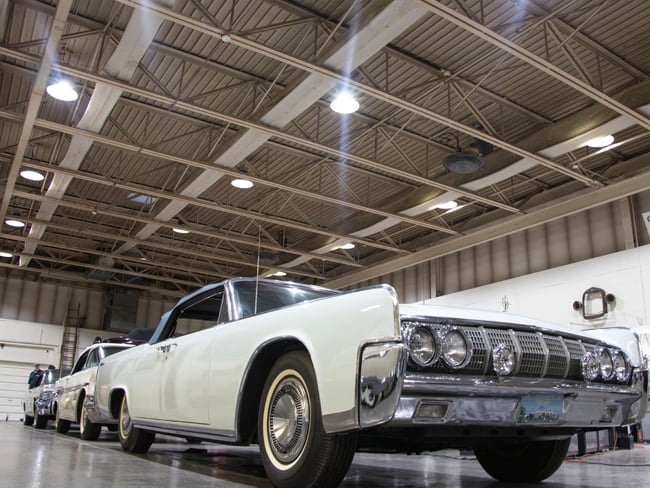
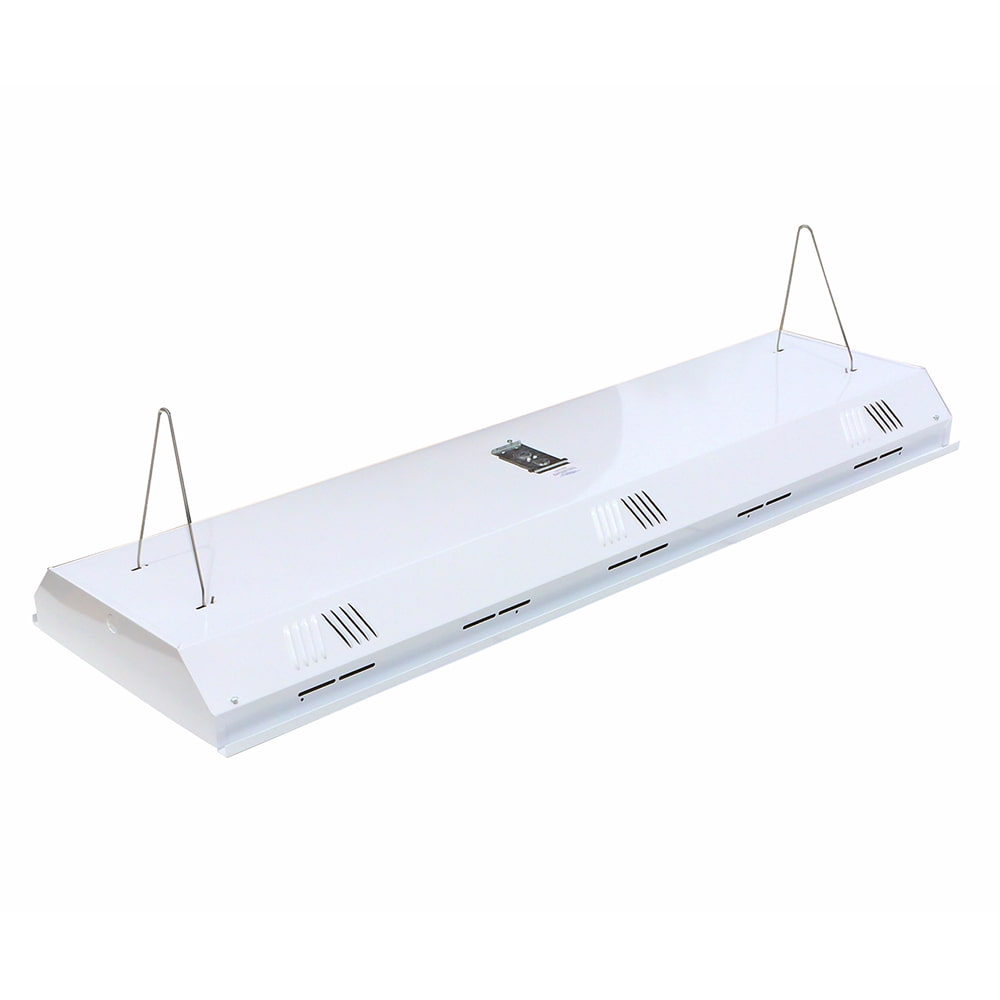

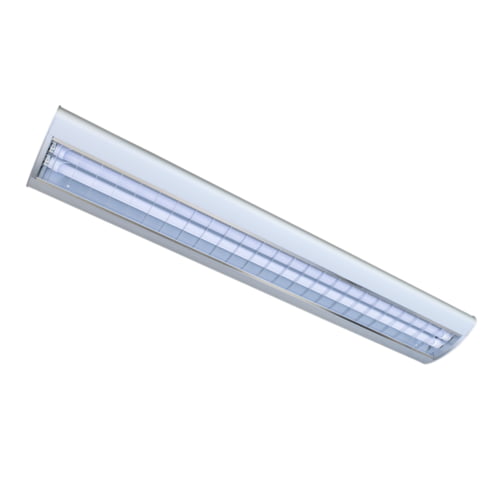


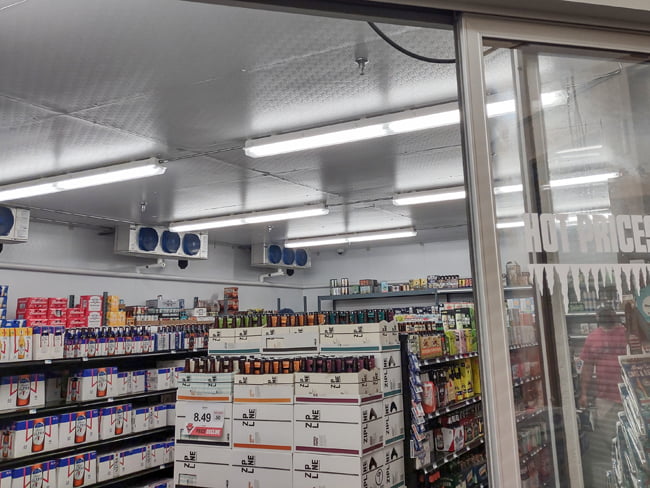
Shop Light Standards
The recommended footcandle levels for shop lighting depend on several factors, including the specific tasks being performed, the layout of the space, and the type of fixtures being used. However, the Illuminating Engineering Society (IES) has published some general guidelines that can be used as a starting point. Here are some examples:
For general lighting in small to medium-sized shops, the IES recommends an average illuminance level of 50-100 footcandles (fc) and a minimum illuminance level of 30 fc.
For larger shops or areas where more detailed tasks are performed, the IES recommends an average illuminance level of 150-300 fc and a minimum illuminance level of 100 fc.
For areas where very detailed tasks are performed, such as inspection or quality control, the IES recommends an average illuminance level of 500-1000 fc and a minimum illuminance level of 300 fc.
Here’s a more detailed breakdown for specific warehouse and shop lighting applications.
| Manufacturing Warehouse Lighting | Footcandles |
|---|---|
| Packaging and Labeling | 30 fc |
| Coarse Material Processing | 10 fc |
| Medium Material Processing | 30 fc |
| Fine Material Processing | 50-100 fc |
| Simple Assembly | 30 fc |
| Medium Assembly | 25-100 fc |
| Difficult Assembly | 100-200 fc |
| Complicated Assembly | 50-200 fc |
| Exacting Assembly and Inspection | 150-600 fc |
| Grain Processing | 70 fc |
| Food Processing | 70 fc |
| Workshop & Maintenance | 50 fc |
Shop Lighting Layout
Using 3D rendering lighting design software, our lighting experts are able to provide our customers with technical shop lighting photometric layouts to ensure the highest quality of illumination for their project. In this example, we used 6 UFO high bays at a mounting height of 14 Feet, and an average illumination of 81.4 Foot-Candles.
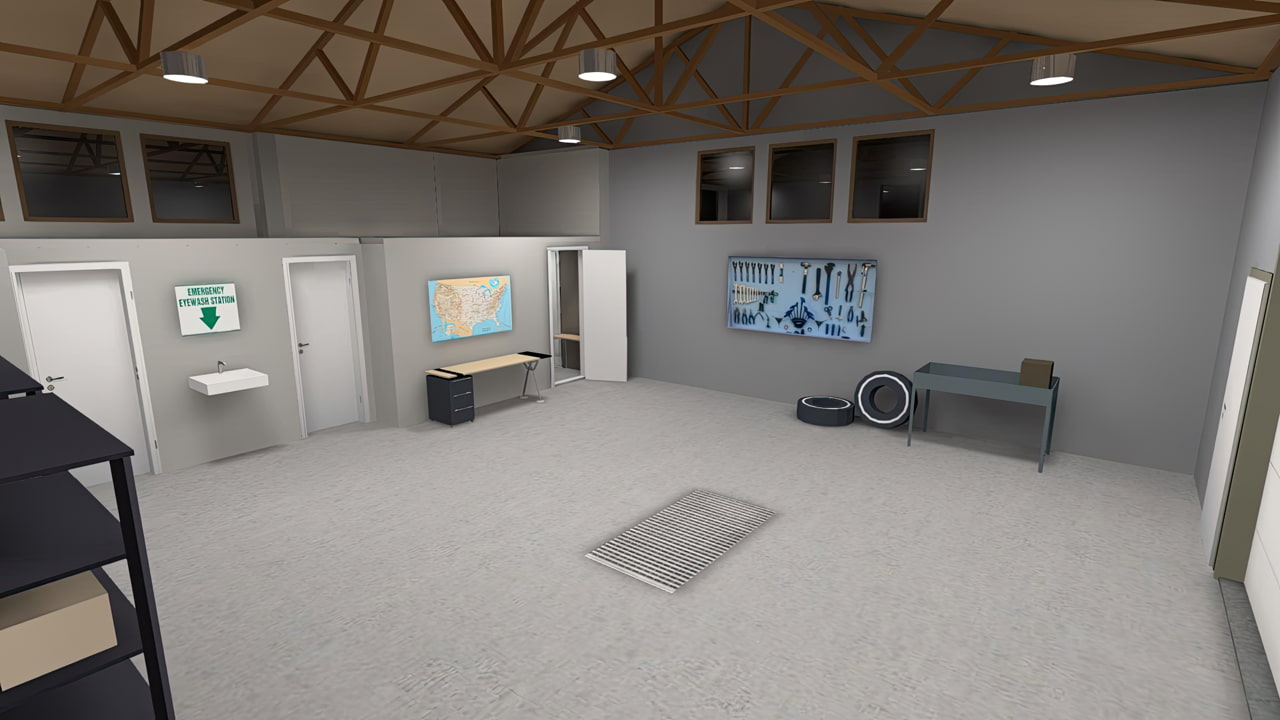
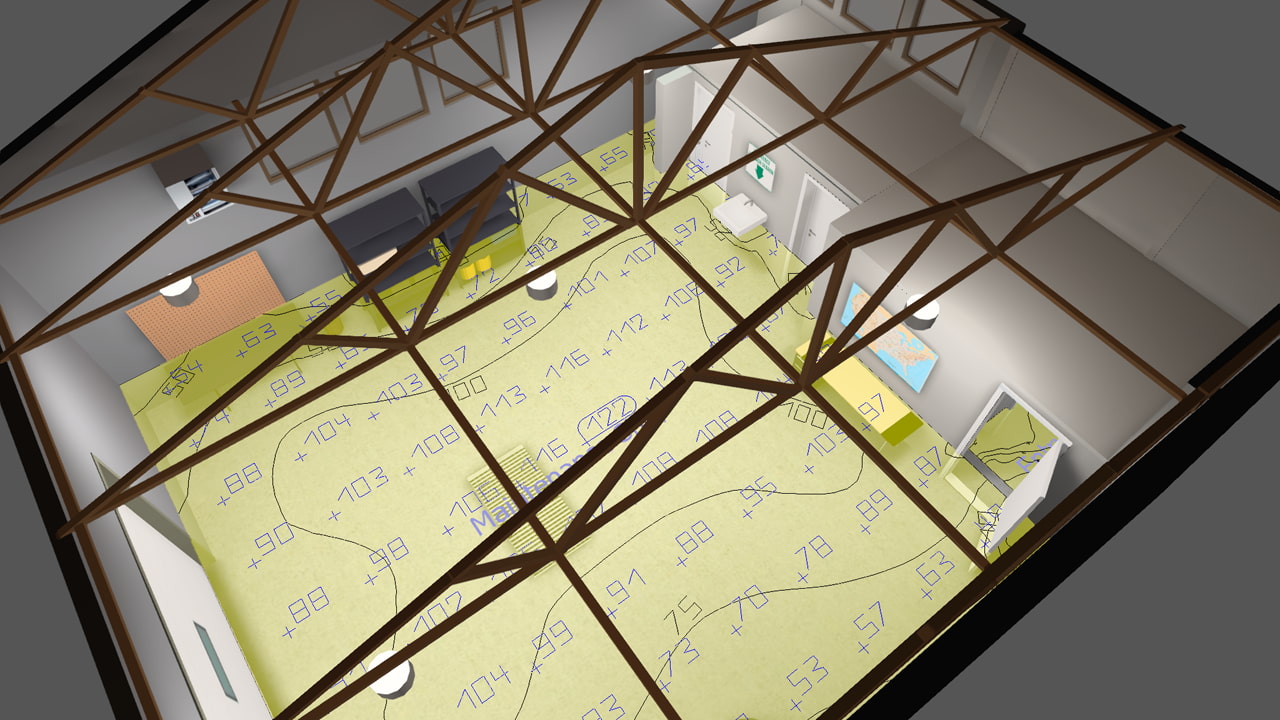
LED Shop Light Pricing
The cost of shop lights can vary widely depending on several factors, such as the type of fixture, the size of the space, the desired lighting levels, and the energy efficiency of the lighting system. Here are some rough estimates of the cost of different types of shop lighting:
Fluorescent fixtures: These are a common choice for shop lighting due to their relatively low cost and high efficiency. A basic 4-foot fluorescent fixture with two tubes can cost anywhere from $20 to $50 per fixture, while more high-end options with higher efficiency and better color rendering can cost $100 or more per fixture.
High-intensity discharge (HID) fixtures: HID fixtures, such as metal halide or high-pressure sodium lamps, are less common for shop lighting due to their relatively low efficiency and long warm-up times. However, they may still be used in some applications where high output and good color rendering are important. The cost of HID fixtures can range from $100 to $500 or more per fixture, depending on the type and quality of the lamp and fixture.
LED fixtures: LED lighting has become increasingly popular for shop lighting due to its high efficiency, long lifespan, and good color rendering. The cost of LED fixtures can vary widely depending on the quality of the LEDs, the type of fixture, and the desired lighting levels. A basic 4-foot LED fixture can cost anywhere from $50 to $100 per fixture, while more high-end options with advanced features like dimming and color tuning can cost $200 or more per fixture.
The LED shop lights we carry range from $49.99 up to $499.99 per fixture.
How Many Shop Lights Do I Need?
In order to determine the number of LED shop lights required to illuminate the space, you’ll need to determine several factors including,
- Ceiling height
- Dimensions of the space
- Facility usage
- Environmental factors
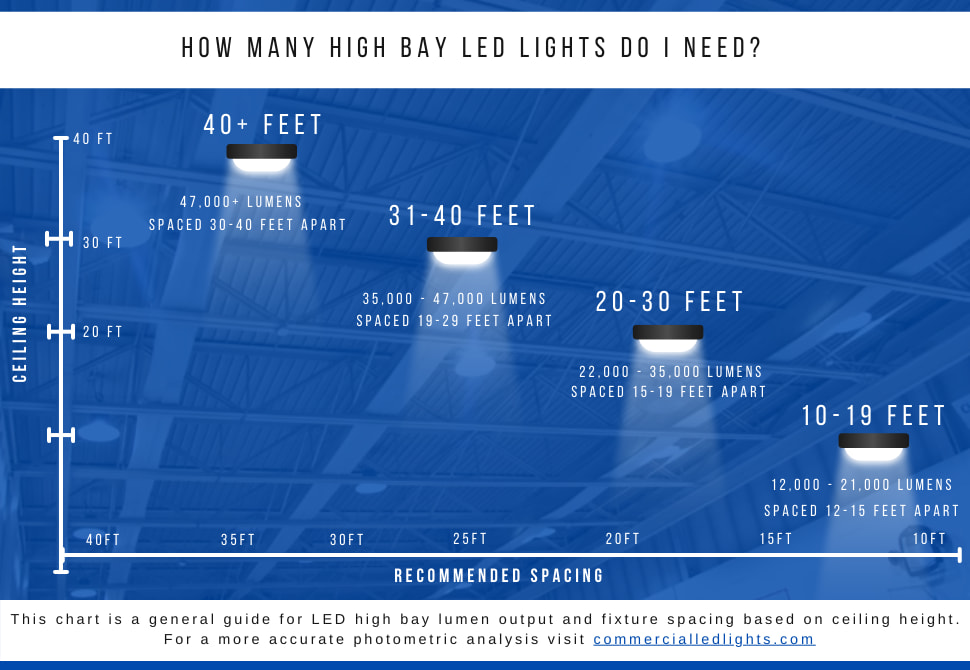
Please note, these projections may vary depending on fixture type, environmental factors, etc. Having a photometric analysis conducted on your area is the most accurate way to determine how many high bay led lights you need to illuminate your space.
For example if you have a ceiling height that’s under 11 feet, we generally recommend using a UFO style fixture with an that’s between 50-100 watts and 9,000-12,000 lumens.
As ceiling height increases, higher lumen output and wattage will be required to adequately illuminate the space.
It’s also important to ensure the fixture has an IP65 Rating if your shop lights are going to be exposed to dust. This includes areas such as automotive shops, work stations, woodworking shops, and other industrial areas.
Here are some basic calculations for the amount of watts/lumens needed for various ceiling heights.
| Ceiling Height | Recommended Wattage | Recommended Lumen Output |
|---|---|---|
| 10-19 feet | 125-170 Watts | 12,000 - 21,000 Lumens |
| 20-30 feet | 200-300 Watts | 22,000 - 35,000 Lumens |
| 31-40 feet | 300-400 Watts | 35,000 - 47,000 Lumens |
| 40+ feet | 400+ Watts | 47,000+ Lumens |
LED Shop Light Spacing
The fixture spacing for LED shop lights depends on several factors, namely, ceiling height. The chart below showcases basic calculations for fixture spacing based on various heights.
| Ceiling Height | Recommended Spacing |
|---|---|
| 10-foot ceiling | 12-15 feet apart |
| 20-foot ceiling | 15-19 feet apart |
| 30-foot ceiling | 19-29 feet apart |
| 40-foot ceiling | 30-40 feet apart |
How Many Lights in a 40x60 Shop?
In order to determine how many lights are needed for a 40x60 shop, we must determine the height of the ceiling. Here is a photometric layout produced by our lighting experts for a 40x60 shop with a 14 foot ceiling.
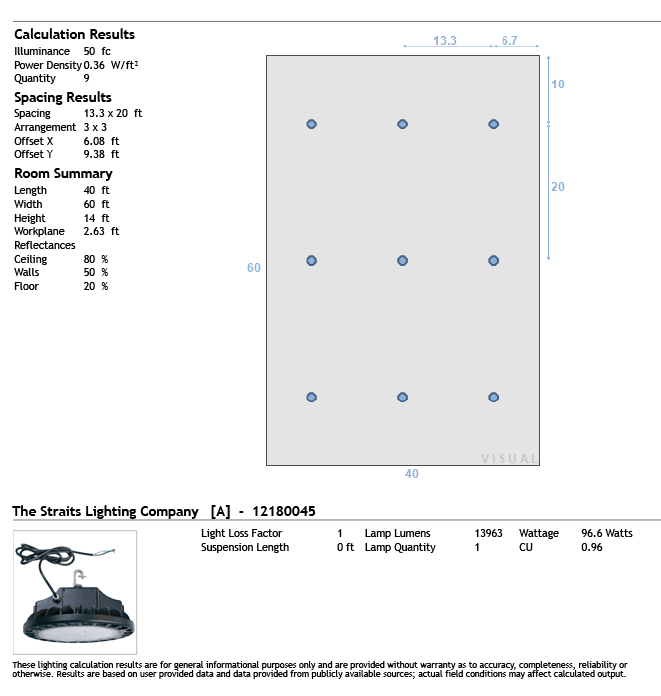
We used UFO LED high bay lights with an IP65 Rating to ensure the fixtures can withstand exposure to dust.
How many lights for a 30x40 shop?
In order to determine how many lights are needed for a 30x40 shop, we must determine the height of the ceiling. Here is a photometric layout produced by our lighting experts for a 30x40 shop with a 14 foot ceiling.
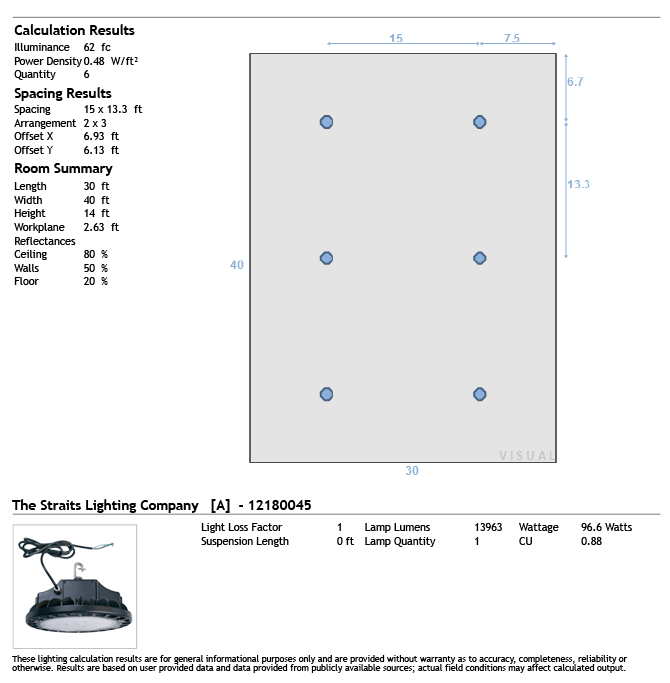
We used UFO LED high bay lights with an IP65 Rating to ensure the fixtures can withstand exposure to dust.
Shop Lighting Design
Even with the highly advanced and high performance LED lighting fixtures available today, the benefits of this technology cannot be fully realized without a proper lighting design. A lighting setup tailored to the specific application will result in not only better lighting performance but also will save a considerable amount of operating costs over the lifespan of the fixtures. These lighting designs are known as photometric plans, and take into account several unique factors such as ceiling height, room dimensions and the foot candle ratings required for that specific application.
Because these factors not only vary per application but also are interdependent, successfully designing an effective photometric plan is outside the scope of most, including lighting and electrical contractors. It is for this reason that we offer in-house photometric planning services, with experts who will be able to take into account your needs and design a lighting plan tailored to your specific application with the maximum performance and energy efficiency possible.
To better illustrate our photometric planning capabilities, below is an example of a shop lighting design our photometric experts created for a large corporate automotive tire and service shop. This plan is specifically designed for a 300 foot by 115 foot facility.
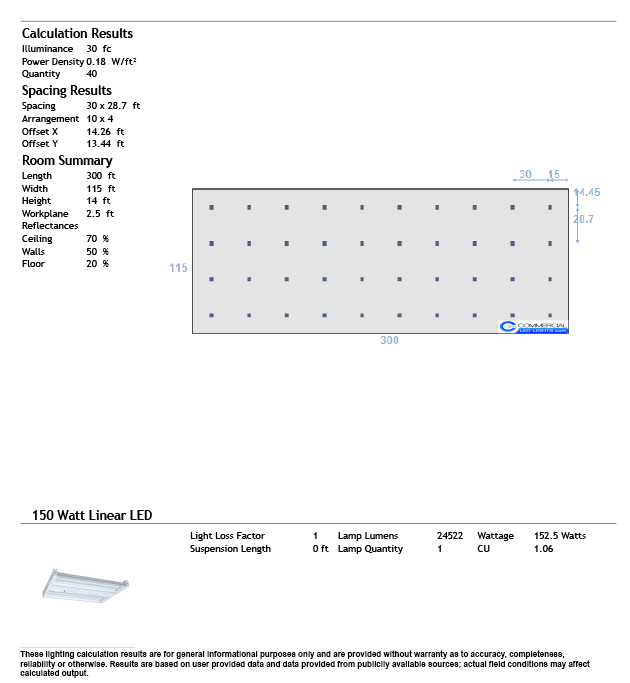
High Bay LED Shop Lights
For applications with tall ceilings above 20 feet, the most effective type of fixtures that can be used are high bay LED shop lights, both linear and UFO style. These lights are specifically designed to produce intense lumen output with a narrow beam in order to ensure adequate foot candle ratings at the ground level. Built to be exceptionally resilient in a wide range of temperatures, these fixtures are perfect for applications running them for long periods of time with minimal maintenance.
The style of high bay chosen depends on several factors, most of which have to do with the shape and design of the area being lit. In most cases, UFO high bay lights are the best choice as their beam is uniform and thus easier to configure. This is especially true in auto repair facilities, indoor vehicle storage facilities, and large workshops which place a priority on ease of installation and adaptability. In shop applications requiring more specific types of lighting, linear LED high bays are sometimes used in order to provide a wider beam pattern. Linear high bays are most commonly used over work areas and work benches.
Low Bay LED Shop Lights
For areas that require strong lighting with ceilings below 20 feet, low bay LED shop lights are considered to be the best choice. These lights are designed to project their light over a broader area, and therefore have a wider beam angle than their high bay counterparts. Generally speaking, low bay lights will be linear in both shape and beam pattern, making them very popular in specific work areas such as automotive work benches, tire shops and packing tables where precise work is being carried out.
Low bay fixtures are usually 4 foot or 2 foot long, and are equipped with anywhere between two and six traditional tube style LED bulbs. There are some low bay fixtures that contain integrated LED strips, which offer the benefit of a streamlined design with purpose built LED chips instead of generic LED tubes. The style chosen really comes down to personal preference, as some users prefer the ability to change out or upgrade bulbs, while others prefer to have a simple plug-in-play setup that takes the guesswork out of things.
Replacing or Retrofitting Shop Lights
In cases where you wish to convert outdated lights inside your facility to LEDs you may be able to retrofit the bulbs while keeping existing fixtures. This may include retrofitting fluorescent bulbs with LED tubes inside a strip lighting fixture or retrofitting bulbs inside a HID fixture. Visit our retrofitting department to learn more about this process.
In other cases, it may be more ideal or necessary to replace your outdated fixtures entirely as this will free up ceiling space, save energy costs, and provide several other benefits. Whichever option you choose, our LED experts can help convert you into the future of lighting!
Commercial LED Shop Lights
We carry a wide range of LED shop lights that cover virtually any commercial or industrial lighting needs. This includes low bays, high bays, warehouse lights, strip lights, and more. Choosing the right option based on your needs will depend on several factors. These factors include: the amount of light required, available space, mounting preference, etc.
Our shop lighting fixtures are produced by top quality lighting manufacturers These products are uL Listed and hold several other key certifications such as IP65, DLC, etc. In other words these lights are durable through harsh environments found inside workshops. Our shop fixtures come in a wide range of designs, wattage, voltage, lumen output, and color temperature.
Frequently Asked Questions
Q. What are shop lights?
Shop lights are lighting fixtures used inside a work area where hands-on or machine operated work is conducted. For instance, when you think of a workshop, lighting is required in order to perform necessary tasks and complete a project. These lights require a specialized design due to exposure to environmental factors such as dust, heat, etc.
Q. Where are shop lights used?
Shop lights are used in any area that’s considered a “work shop.” These work areas may include an auto body shop, machine shop, etc. They may also be used in other commercial or industrial areas such as warehouses, utility rooms, or storage areas.
Q. What are the different types of shop lights?
There are a variety of different shop lights. The type of fixture used will depend on factors such as ceiling height, environmental conditions, etc. These fixtures range from high bay lights for ceilings higher than 20 ft. to low bay lights for ceilings under 20 ft. There are also fixtures specially designed to withstand harsh environments.

